Wabi Sabi Decor Ideas in Rustic Farmhouse
Nestled in the rolling hills of the Italian countryside, rustic farmhouses stand as a testament to timeless beauty and enduring strength. These homes, adorned with decor comprising weathered stones and sun-kissed terracotta tiles, tell a story of the land and the hands that have shaped them over generations. It’s within these walls, surrounded by decor that bears the patina of time, that the Japanese philosophy of Wabi-Sabi finds a harmonious echo, celebrating the beauty of imperfection and the grace of aging.
Video Featuring Over 100 Wabi Sabi Interior Design in Rustic Farmhouse
Explore over 100 unique ideas and inspirations for embracing Wabi-Sabi in your rustic farmhouse with our latest video. Discover how to integrate natural beauty and celebrate the perfection in imperfection through thoughtfully curated decor elements. Dive into a world where each detail tells a story of time and authenticity
Wabi-Sabi, at its core, is about finding depth in simplicity, appreciation in the modest, and a profound resonance in the not-so-perfect. This philosophy underpins a design aesthetic that speaks to the soul, embodying principles of mindful living that encourage us to pause and find serenity in the asymmetry and roughness that life imprints upon our surroundings. It’s an invitation to slow down and celebrate the beauty of the natural, unrefined world as an integral part of our daily experience.

The Rustic Canvas of an Italian Farmhouse
The Italian farmhouse, with its robust architecture and rural charm, presents the perfect canvas for Wabi-Sabi. The walls, often made of local stone or brick, bear the marks of time, while wooden beams and terracotta floors showcase natural textures and irregularities. These elements, inherently Wabi-Sabi, form the backdrop for an interior design approach that honors authenticity over polish and lived-in warmth over manufactured precision.

Incorporating Wabi-Sabi into Your Space
1. Natural Materials
Embrace the use of natural materials in their most honest form. Reclaimed wood for tables or shelves, stone basins, and linen textiles align with the Wabi-Sabi ethos, adding a touch of the elemental and the raw.
2. Handmade Ceramics
Replace mass-produced items with handmade pottery and ceramics. Each piece, with its unique imperfections, contributes to a narrative of human touch and artistry.

3. Simplicity in Decor
Wabi-Sabi doesn’t revel in abundance but in the ‘just enough.’ A few well-chosen pieces that speak to the heart are more valued than a multitude of decorative items.
4. Earthy Palette
Color schemes should draw from a muted, earthy palette that complements the rustic setting. Think ochres, umbers, and soft greys that echo the soil, stone, and sky.
5. Patina and Wear
Celebrate the patina that comes with age. Whether it’s a worn leather chair or a weathered wooden door, each mark tells a story of life and the passage of time.
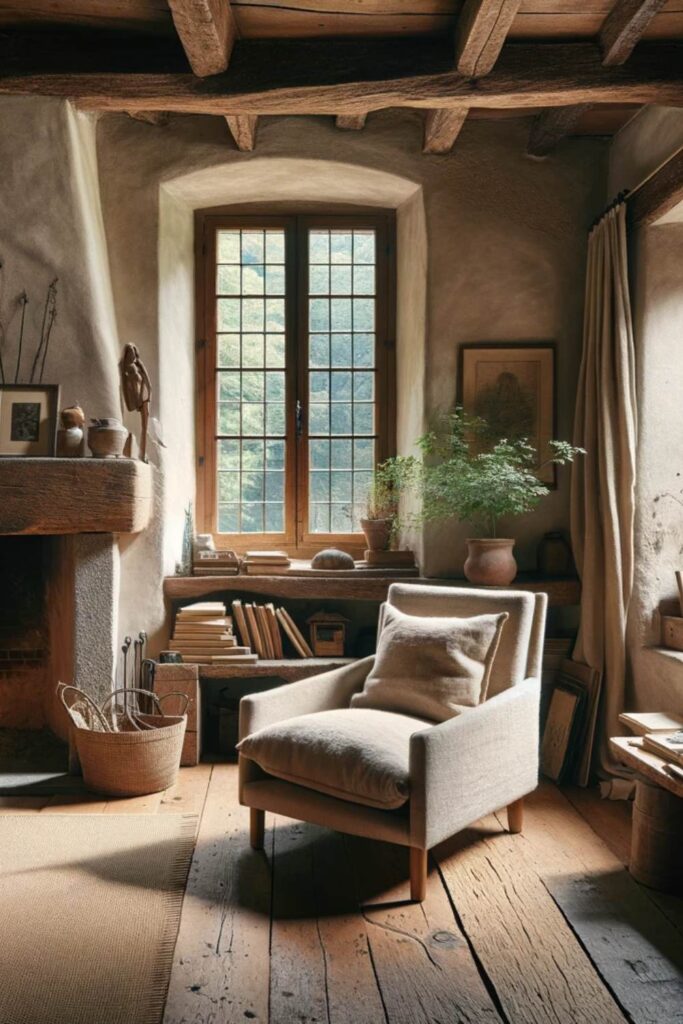
The Heart of Wabi-Sabi: Imperfect Beauty
The essence of Wabi-Sabi in decor is the recognition that there is beauty in the worn, the cracked, the asymmetrical. It is in this celebration of imperfection that a rustic Italian farmhouse finds its soulful beauty magnified. Furnishings and finishes don’t hide from the ravages of time; they display them proudly, inviting us to appreciate the unspoken elegance in the tactile and the tattered.
Living Wabi-Sabi
Adopting the Wabi-Sabi approach to design isn’t just about aesthetic choices; it’s a lifestyle. It’s about slowing down, cherishing each moment, and finding peace in the knowledge that nothing is permanent, perfect, or complete. In the humble walls of a rustic Italian farmhouse, we find a retreat from the relentless pursuit of perfection, a space where we can breathe, reflect, and be at peace with the beautiful imperfection of life.

Integrating Nature and Authenticity
Incorporating the Wabi-Sabi philosophy into your home means welcoming the outdoors inside and allowing natural processes to dictate design. This could be as simple as decorating with branches and leaves that have fallen naturally, or allowing the natural aging process of materials to be visible and appreciated. This not only connects us more deeply with nature but also serves as a daily reminder of the transient nature of all things.
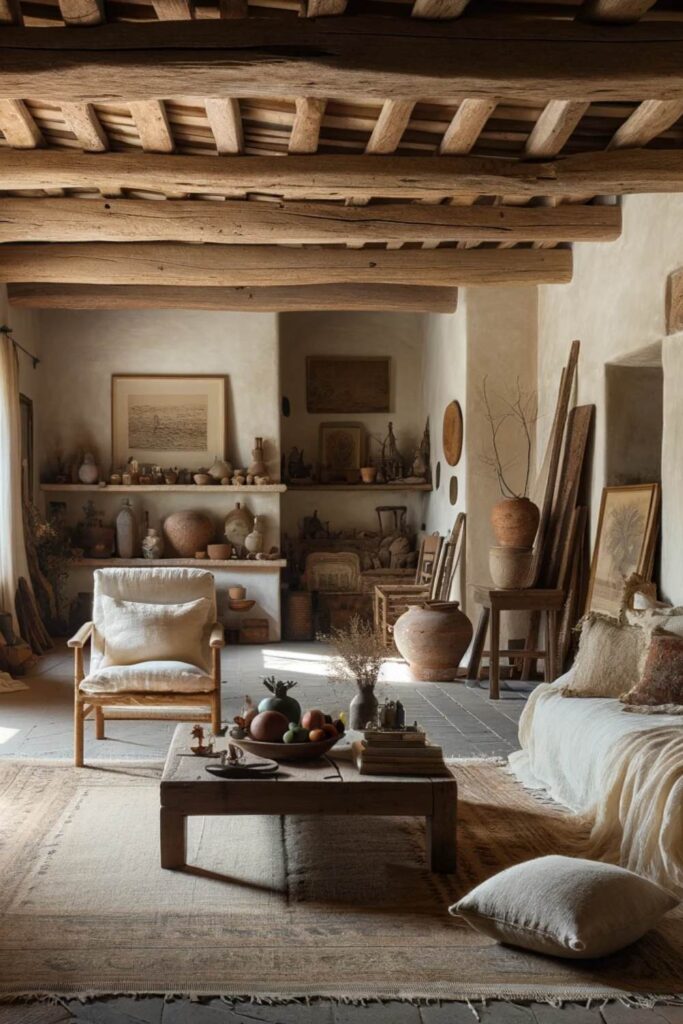
Mindful Arrangement
In a Wabi-Sabi styled home, every object has a purpose and place, often in ways that highlight its imperfections. This could involve arranging furniture asymmetrically to honor the organic nature of the space or using lighting in a way that casts shadows that accentuate uneven surfaces and textures. Such mindful arrangement encourages us to live more intentionally and thoughtfully.

Embracing Minimalism
While Wabi-Sabi appreciates the beauty in the old and imperfect, it also champions minimalism. This isn’t about having fewer things for the sake of it, but about having things that have meaning and purpose. This approach not only declutters the space but also the mind, allowing for a more contemplative and mindful way of living.
Conclusion
Wabi-Sabi decor in a rustic farmhouse is more than just a style; it’s a reflection of a lifestyle that embraces the beauty of natural imperfection and the ephemerality of life. By integrating elements of Wabi-Sabi into your space, you not only create a unique and beautiful aesthetic but also cultivate a mindset that appreciates the simpler, quieter moments of life. In doing so, we create homes that are not only sanctuaries for ourselves but also beacons of peace and tranquility in a world that often seems in too much of a hurry.
FAQs for Wabi-Sabi decor in a rustic farmhouse setting
1. What is Wabi-Sabi? Wabi-Sabi is a Japanese philosophy that finds beauty in imperfection and impermanence. In interior design, it emphasizes simplicity, natural materials, and textures that showcase the passage of time and the beauty of aging gracefully.
2. How can I incorporate Wabi-Sabi into my rustic farmhouse decor? To incorporate Wabi-Sabi in your rustic farmhouse, focus on using natural materials like wood, stone, and linen in their most authentic forms. Embrace furnishings and accessories that display wear and patina, and opt for a muted, earthy color palette. Handmade items like pottery and ceramics can also add a personal touch that aligns with the Wabi-Sabi philosophy.
3. What types of materials should I use in a Wabi-Sabi inspired farmhouse? Natural and unrefined materials are central to Wabi-Sabi. Consider reclaimed wood for furniture and shelving, stone for countertops or accents, and natural fibers such as jute, wool, or linen for textiles. These materials not only reflect the rustic charm but also wear beautifully over time, enhancing their aesthetic appeal.
4. Can modern elements be mixed with Wabi-Sabi decor? Yes, modern elements can beautifully complement Wabi-Sabi decor if chosen thoughtfully. The key is to balance clean, modern lines with the rustic, imperfect features typical of Wabi-Sabi. For instance, a sleek, minimalist lamp can enhance a space with rustic wooden furniture, highlighting the beauty of its natural imperfections.
5. What color palette works best with Wabi-Sabi decor? A muted, earthy color palette works best with Wabi-Sabi decor. Opt for shades that mimic natural elements such as ochres, umbers, soft greys, and muted greens. These colors help create a calming and grounded environment that is central to the Wabi-Sabi aesthetic.
6. How do I choose decorations for a Wabi-Sabi style farmhouse? In Wabi-Sabi, less is more. Choose decorations that have meaning and beauty, even in their imperfections. Items like a cracked ceramic vase, a weathered wooden sculpture, or vintage books can serve as decor. Each piece should contribute to a sense of peace and authenticity in the home.
7. Is Wabi-Sabi affordable to implement in home decor? Yes, Wabi-Sabi can be quite affordable since it values the beauty in existing objects and materials, often found or reclaimed. It encourages the use of items that many would overlook, finding charm in their weathered and worn appearance, which can often be sourced inexpensively or even for free.






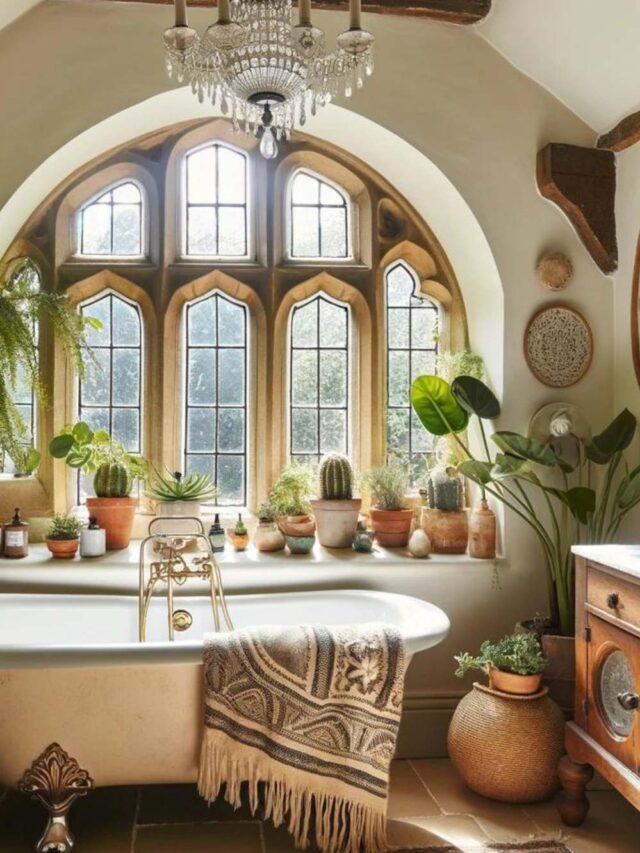



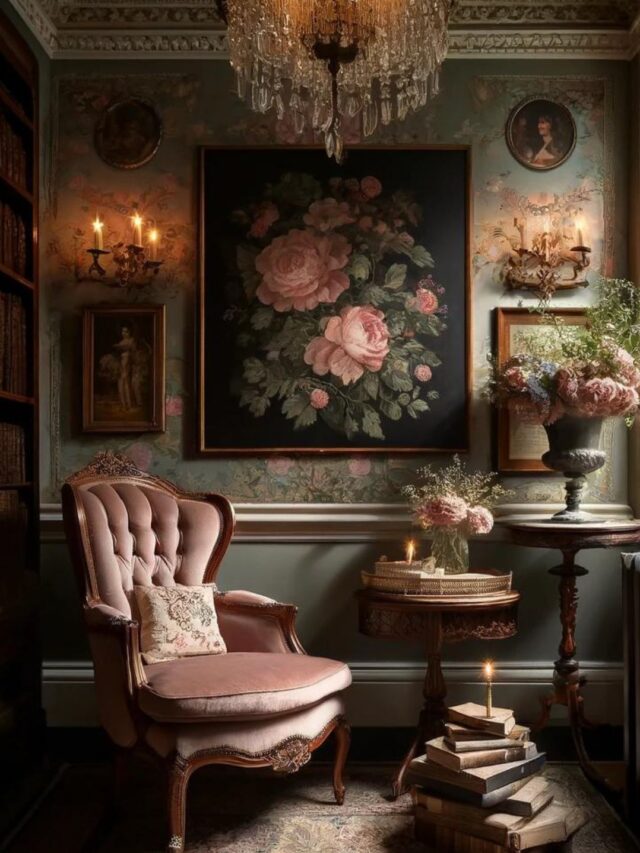
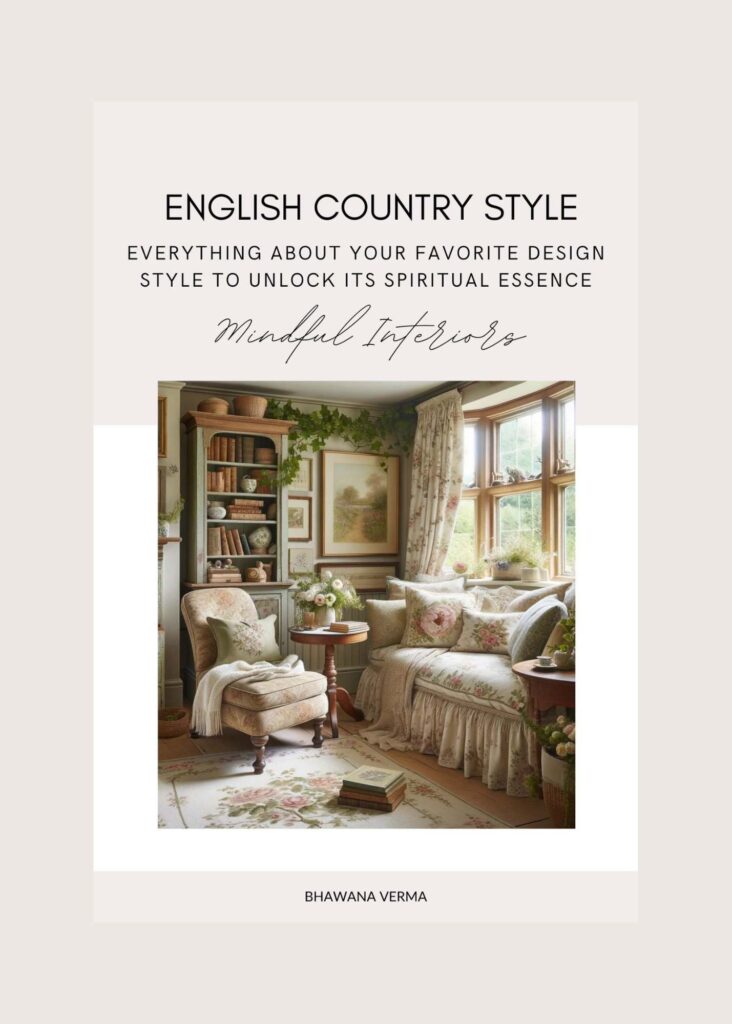







One Response